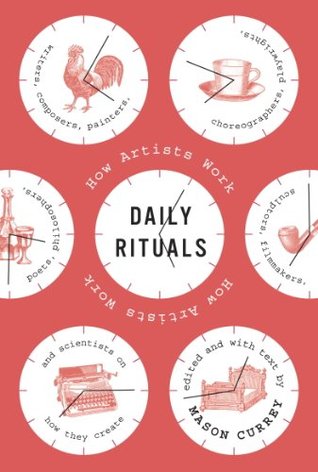More on this book
Community
Kindle Notes & Highlights
In both writing and sleeping, we learn to be physically still at the same time we are encouraging our minds to unlock from the humdrum rational thinking of our daytime lives.
In a 1968 letter, Bellow gave a more succinct description of his routine. “I simply get up in the morning and go to work, and I read at night,” he wrote. “Like Abe Lincoln.”
Gerhard Richter (b. 1932) Richter wakes at 6:15 every morning, makes breakfast for his family, and takes his daughter to school at 7:20. He’s in his backyard studio by 8:00, and he stays there until 1:00.
Maira Kalman (b. 1949) The New York illustrator, artist, and designer wakes up early, about 6:00 A.M., makes the bed, and reads the obituaries. Then she goes for a walk with a friend, returns home to eat breakfast, and—if she’s on deadline—heads to her studio, in the same building as her apartment. “I have no phone, or email, no food or anything to distract [in the studio],” she said in a recent e-mail. “I have music and work. There is a green chaise there if a nap is needed. And in the late afternoon it is often needed.”
Simenon didn’t write for very long each day. His typical schedule was to wake at 6:00 A.M., procure coffee, and write from 6:30 to 9:30. Then he would go for a long walk, eat lunch at 12:30, and take a one-hour nap.
You write by sitting down and writing. There’s no particular time or place—you suit yourself, your nature. How one works, assuming he’s disciplined, doesn’t matter. If he or she is not disciplined, no sympathetic magic will help. The trick is to make time—not steal it—and produce the fiction. If the stories come, you get them written, you’re on the right track. Eventually everyone learns his or her own best way. The real mystery to crack is you.


